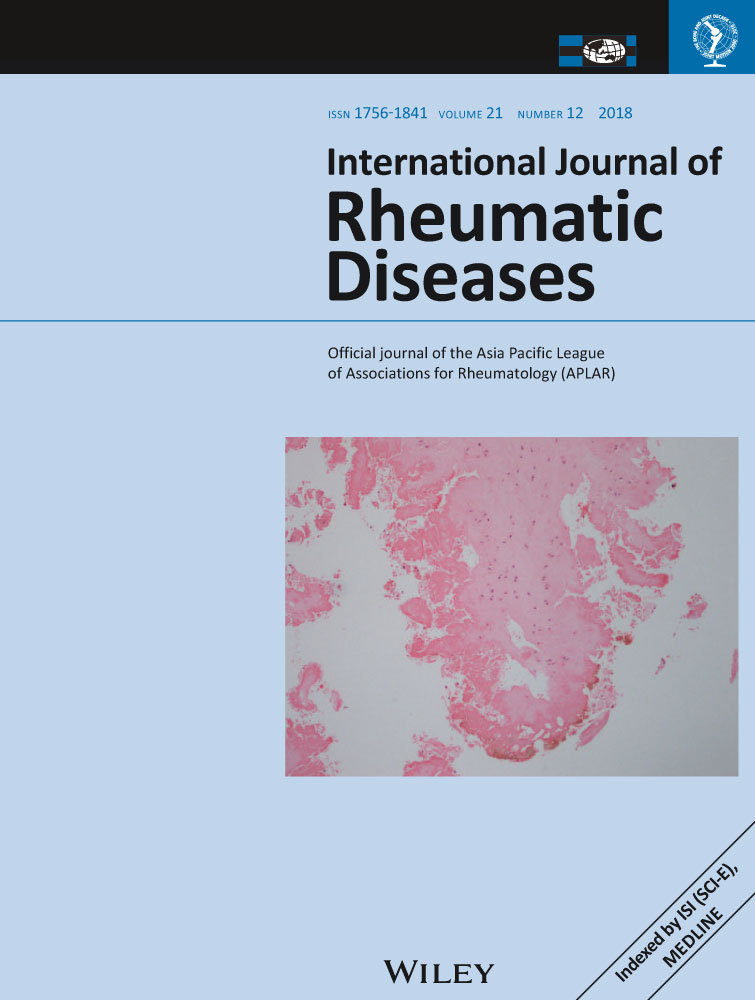High prevalence and correlates of osteoporosis in men aged 50 years and over: A nationwide osteoporosis survey in Taiwan
Abstract
Aims
Osteoporosis is one of the consequences of aging, and it remains underdiagnosed and undertreated; this study aimed to present the characteristics and prevalence of osteoporosis in elderly men by conducting a nationwide survey in Taiwan.
Methods
The participants were enrolled between 2008 and 2011, and bone mineral density (BMD) was measured via dual-energy X-ray absorptiometry for the hip (total), lumbar spine (L1-4), and femoral neck (FN). Patients with rheumatoid arthritis, female patients, and those using steroids were excluded. Osteoporosis was defined as a T-score at the FN of ≤−2.5.
Results
This study included 3734 men of mean age 70.0 ± 9.3 years, accounting for the prevalence of osteoporosis at 9.7%. Participants with osteoporosis had a significantly older age, lower body weight, shorter height and more previous fractures than those without osteoporosis. The mean BMD at FN was 0.534 ± 0.056 and 0.791 ± 0.115 (g/cm2) in participants with and without osteoporosis, respectively (P < 0.001). The FN and hip (total) BMD showed a significant negative correlation with age (r = −0.234, P < 0.001) and (r = −0.003, P < 0.001), respectively, but not at L1-4 (r = 0.00, P = 0.540). A history of fracture is the most important risk factor associated with male osteoporosis (odds ratio, 2.50; 95% CI, 1.49-4.21; P = 0.006).
Conclusions
The associated factors for male osteoporosis are aging, lower body weight, and a history of fracture; the BMDs at FN and hip (total), but not L1-4, are inversely correlated with age. We recommend that BMD at the proximal femur be the preferred site to evaluate osteoporosis for elderly male subjects.
CONFLICTS OF INTEREST
The Taiwan Osteoporosis Association conducted the nationwide circuit program for BMD measurements, sponsored by the Merck Sharp & Dohme Pharmaceutical Company. A bus installed with a DXA machine, a well-trained nurse, and an International Society of Clinical Densitometry (ISCD)-certified radiology technician were sponsored by Merck Sharp & Dohme Pharmaceutical Company. The DXA machine was calibrated by a proper phantom every day, as suggested by the manufacturer. In addition, Merck Sharp & Dohme Pharmaceutical Company was not responsible for the data management, manuscript preparation or submission. There are no patents, products in development, or marketed products to declare with respect to this manuscript. The authors declare that they have no competing interest.




